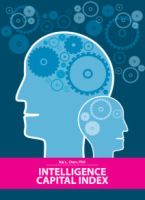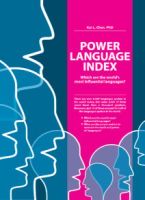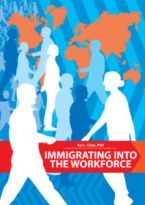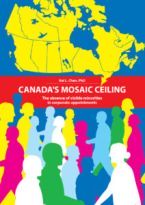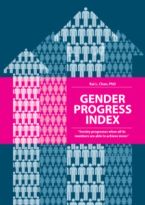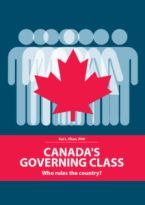What is monetary policy?
Monetary policy is the means by which a state’s monetary authority (typically a central bank) controls the supply of money (often by means of being the monopoly supplier of fiat money and also by its ability to influence or enforce how financial institutions (e.g. banks) extend credit). This can be done by targeting a rate of interest through open market operations (buying and selling of government bonds) or by other means of affecting the supply and demand of money.
Quantitative easing, zero-interest rate policy (ZIRP) and liquidity traps:
During the era of the so-called Great Moderation (circa 1985-2007), monetary policy had become almost mundane. Countries began embracing inflation targeting (whether explicit or implicit) and in the United States the Taylor Rule, an approximation of the Federal Reserve’s policy of setting interest rates to inflation and output shocks, made monetary policy nearly predictable. Nevertheless, Japan slumped into a liquidity trap in the first decade of the second millennium that led to an era of unconventional monetary policy in the world’s second largest economy (at that time). However, monetary policy in the developed economies would veer toward a path akin to that of Japan as a result of the global recession of 2008-09. In 2009 the United States fell into a liquidity trap (in which it is still stuck), where near-zero interest rates have been unable to stimulate the economy. This ineffectiveness of interest rates has forced the Federal Reserve, under the leadership of Ben Bernanke, to experiment with unconventional monetary policy in the form of “quantitative easing”. The aim has been to stimulate the economy with the hopes ameliorating the persistently high level of unemployment (9.1 percent in May 2011).
Quantitative easing (or “QE”) is often described as “printing money” but is more nuanced. It is a process whereby the central bank creates credit in its own account and uses these credits to acquire (typically long-term) financial assets from financial institutions, thus increasing the supply of money in the economy. The aim is to drive down interest rates (especially long-term rates) on financial assets, thus stimulating the economy when short-term rates can go no lower on account of a zero lower bound. QE also has a natural corollary of devaluing the national currency as some of the extra liquidity will almost surely leak abroad in an open economy.
Without some kind of jolt to boost the economy, the United States risks entering into an era of high unemployment where low growth is unable to measurably bring down unemployment. Europe suffered a similar phenomenon in the 1980s, which many economist had dubbed “Eurosclerosis”. Thus the United States faces the dual dangers of slumping into a lost decade similar to that of Japan, and also that of an unemployment problem comparable to that of Europe in the 1980s.
How the United States, as well as other countries operating in zero interest rate policy (ZIRP) environments, fare in navigating their economies back onto a more normal path will be a test on the economic and political institutions of these countries.
Central banking modus operandi:
Central banks (or reserve banks or monetary authorities) are public institutions that are typically vested monopoly rights to issue currency, thus regulating the money supply and influencing key interest rates in the economy. In addition to its role as the nation’s currency supplier, the central bank also supports the commercial banking sector and is often the lender of last resort to these institutions. Given the importance of the financial sector to the economic health of a country, central banks are often also given regulatory and/or oversight powers over the financial sector (or parts thereof). In conducting monetary policy the central bank has several tools at its disposal: (1) interest rates, (2) reserve requirements, (3) discount window lending, and (4) “open mouth” policies.
Central banks are usually tasked with achieving price stability, and sometimes also full employment or sustainable growth, within its mandate to oversee the monetary sector. In concrete terms, this usually means low and predictable inflation (usually on the order of 2%) and targeting the minimal level of the unemployment rate which will not drive up inflation (the “non-accelerating inflation rate of unemployment” or NAIRU). These are typically opposing goals, so one key art of monetary policy is in juggling these competing objectives, within a context where interest rates have far-reaching effects.
Inflation targeting is one of the ways that many central banks try to achieve price stability and economic growth. Inflation targeting was first pioneered by the Reserve Bank of New Zealand; its goal is to steer the inflation rate to a targeted level (usually 2%) through the use of monetary policy tools. This is a favoured modus operandi by many central banks because history and academic studies have shown that a policy of targeting the inflation rate leads to desirable/stable macroeconomic outcomes. (The Federal Reserve is not officially a practitioner of inflation targeting, though its policies are de facto inflation targeting.) Although simple in concept, there are many complications. Of note has been the debate between the use of headline versus core inflation as the best gauge of price movement. Headline inflation is what is generally reported according to the CPI, while core inflation excludes many of the items found in the CPI basket, namely those that are more volatile and are not likely to cause household to embed future inflation into their expectations. For a treatment on inflation targeting see Ben Bernanke et al (2001): “Inflation targeting: Lessons from the international experience.”
Blanchard et al (2010) question the artificially set target of 2% inflation (“Rethinking macroeconomic policy“), as a low target level means a lower nominal interest rate and thus less ammunition of interest-rate cutting for a central bank. This line of reasoning argues that central banks would be better able to avoid the zero lower bound of nominal interest rates (i.e. a liquidity trap) if the target level of inflation were marginally higher, whereas a marginally higher level of the target inflation rate would have only an immaterial effect on the economy.
Central bank independence:
Most modern central banks are run at arms length from the political process in acknowledgment of the time inconsistency of monetary policy; i.e. that there always exists at present a temptation to deviate from the long-term best policies. In fact, the independence of central banks is often enshrined into the national framework. Countries choose to create independent central banks because there is ample evidence that the goals of price stability and full employment are best achieved when monetary decisions are not at the whim of politicians: “Central bank independence and macroeconomic performance: Some comparative evidence” (Alesina & Summers, 1993).
Conservative central banker:
Given the conflicting goals of price stability and full employment, the pertinent question is, What weights should the central bank assign to the two goals? Kenneth Rogoff (1985) argued very convincingly that a central bank is best served by a conservative leader, i.e. one who places greater importance on price stability relative to full employment than society as a whole: “The optimal degree of commitment to an intermediate monetary target.”
Central banks and asset markets:
Because of its ability to influence key interest rates, as well as its powers to regulate and/or oversee the financial sector, central banks have significant sway in impacting asset markets (especially financial asset markets). Arguably the most significant of these asset markets is the housing market, as real estate is typically the largest investment owned by households and is widely held. In fact, the global recession of 2008-09, which was triggered in many countries by the collapse of real estate, has placed greater emphasis on the role that central banks should play as macroprudential regulators. This is supported by the evidence that many financial crises are triggered by real estate collapses, which were in rooted in suboptimal monetary policy (see “This time is different: Eight centuries of financial regulation folly” by Reinhart & Rogoff, 2009).
Nouriel Roubini (2006) argued in the journal International Finance, a year before the bursting of the real estate bubble in the US, that central banks should proactively manage asset markets, and in particular prick bubbles before they grow too large and have deleterious effects on the economy when they implode: “Why central banks should burst bubbles.” Nevertheless, targeting asset markets, and in particular the real estate market, with the interest rate — the principal tool of monetary pool — is a blunt instrument for a surgical exercise.
On the other hand, the view that was espoused by Greenspan at the time, and which was supported by Adam Posen (2006) in the same edition of International Finance, is that central banks should be concerned with asset price bubbles only insomuch that they have effects on price stability or full employment: “Why central banks should not burst bubbles.” This is the “mopping up” view, which asserts that central banks should not interfere in financial markets, and should act only to clean up the after the mess.
The global financial crisis has shown the folly of the non-interventionist view and now there is a growing momentum among economists that central banks should play an active role in regulating the real estate market, although there remains a lot of debate on how exactly it should influence property prices. Macroprudential policies, such as controlling LTV, taxation and lending policies, have the benefit of being targeted, as they impact the real estate market directly. Nevertheless, the best choice of the tools to limit real estate bubbles depends also on the size and homogeneity of the country: “What should central banks do about real estate prices” (Allen & Carletti, 2011).
Central bank transparency:
In an earlier era central banks conducted monetary policy under a shroud of secrecy. Alan Greenspan highlighted this with his mysterious and coded quips to the press. However, the recent trend has now been for full transparency of monetary policy as academic and empirical evidence has shown that communicating monetary policy has been an effective tool for the central bank to help achieve its goals: “Central bank transparency” (Geraats, 2002).
Sovereign risk and default:
A country is said to suffer from “original sin” if it borrows from international capital markets in foreign currency, while its income to finance the debt is in local currency. (See, e.g. “Must original sin cause economic damnation?” by Cespedes, Chang and Velasco (2003).) In such cases, a currency crisis — a sharp depreciation of the domestic currency in terms of the foreign currency — makes the ability to service its external debt obligations difficult. Lacking the ability to (directly) inflate away its foreign debts, and given the economic and political unpalatability of deflation, countries may need to resort to repudiating their external debts. Sovereign debt crises have traditionally been problems of under-developed economies, but the European debt crisis, with the periphery countries of the euro monetary union on the brink of default, is making sovereign risk more than just a topic for those study emerging markets.
Optimal currency union areas:
Robert Mundell (Noble laureate, 1999) and Milton Friedman (Nobel laureate, 1976) had a famous debate on fixed exchange rates, gold, and a global currency in 2001 at the time of the formation of the euro single currency. Their exchange was published in Policy Options (May 2001), a Canadian policy journal, at a time when some advocated that Canada adopt the US dollar: “One world, one money?”
Paul Krugman wrote a nice layman’s explanation of the difficulties of the European currency union and why it is likely not an optimal currency union for the New York Times (13 January 2011): “Can Europe be saved?”
The eurozone:
European politicians created a currency union now known as the eurozone on 1 January 1999 with 11 member states. The first euro currency notes and coins, however, were issued on 1 January 2002. The single-currency bloc has since grown to 19 member countries. Most (objective) economists have long pointed out that Europe (and the eurozone) is not an optimal currency union. However, the creation of the Euro was more about politics than economics. The ongoing crisis in Europe is a testament to the problem of adopting a single monetary policy without levers (e.g. fiscal transfers) to allow for (automatic) adjustments within the bloc. From the outset, the eurozone did not meet the conditions of an optimal currency union. Most notably, the bloc lacks (actual) labour mobility, and the share of GDP based on trade with other member nations is low in comparison to de facto optimal currency unions (e.g. the United States).
Without automatic mechanisms to alleviate the pressures induced by applying a single monetary policy to 19 (and growing) disparate economies, the Euro will be forever doomed to crises as exemplified by the Greek Crisis. If the single-currency bloc is to succeed, its members will have to forge greater fiscal union amongst other needed measures.
Currency crises:
“Every currency crisis is connected with pegged rates… [They are] ticking time bombs[s].”
Milton Friedman (2001)
Economists have devised many clever techniques (after the fact) to model out currency crises. To best understand why currency crises happen one needs to understand the evolution of how economist wrap their minds around the problem. Paul Krugman (1979) introduced a seminal and simple model that showed that currency attacks were a natural consequence of non-sustainable government policies (e.g. persistent balance-of-payment deficits). The second generation of currency crises models argued that attacks to a currency can have multiple equilibria owing to uncertainties about government behaviour, which also meant that self-fulfilling attacks were possible. The third generation of models introduced the banking and financial systems. The cutest of these models refined the multiple equilibria outcome into a unique equilibrium using a game theory approach of investors. Below are some of the more prominent papers of the first, second and third generation models.
First generation models:
- A model of balance-of-payments crises (Krugman (1979))
Second generation models:
- Rational and self-fulfilling balance-of-payment crises (Obstfeld (1986))
Third generation models:
- Unique equilibrium in a model of self-fulfilling currency attacks (Morris & Shin (1998))
A guide on monetary policy tools by the ECB:
The European Central Bank (ECB) is embroiled in a crisis as it fights to save the euro. In calmer times it was lauded for bringing price stability to the euro zone. The tools and the techniques by which it has worked is laid out in this manual published in 2008: “The implementation of monetary policy in the euro area.”
Currency boards:
A currency board is a monetary arrangement that pegs the monetary base of one country to another — the “anchor nation”. As such, it essentially operates as a hard fixed exchange rate, whereby local currency in circulation is backed by foreign currency from the anchor nation at a fixed rate. Thus, to grow the local monetary base an equivalent amount of foreign currency must be held in reserves with the currency board. This limits the possibility for the local monetary authority to inflate or pursue other objectives. The principal rationales behind a currency board are threefold:
- To import monetary credibility of the anchor nation;
- To maintain a fixed exchange rate with the anchor nation;
- To establish credibility with the exchange rate (the currency board arrangement is the hardest form of fixed exchange rates outside of dollarisation).
In theory, it is possible that a country may peg the local currency to more than one foreign currency; although, in practice this has never happened (and it would be a more complicated to run than a simple single-currency currency board). Hong Kong operates a currency board that has the Hong Kong dollar (HKD) fixed to the US dollar (USD) at the rate of HKD 7.80 = USD 1.00; this rate has been in effect since 1983 making it the longest enduring currency board. The Hong Kong dollar is also the anchor currency with respect to the Macau pataca (MOP) at the rate of MOP 1.03 = HKD 1.00, making the HKD both a pegged and anchored currency. A gold standard is a special case of a currency board where the value of the national currency is linked to the value of gold instead of a foreign currency.
Within Hong Kong there also exists a “fixed exchange rate” amongst the four note-issuing institutions: The Hong Kong Monetary Authority (HKMA), Bank of China (BoC), HSBC, and Standard Chartered Bank (SCB). Each issues its own notes and each is freely exchangeable with one another at par.
Bi-metallic currency:
History and mechanics of price-specie flow mechanism:
Princeton University PhD dissertation (2008):
Chan, Kai L. (2008): “Three essays on monetary policy in small open economies“, Princeton University doctoral dissertation.
Committee: Paul Krugman (main advisor), Alan Blinder, Gene Grossman, Hyun Song Shin.
Monetary economics/policy literature:
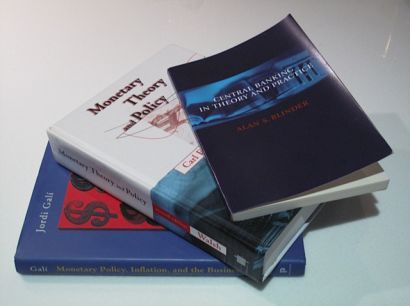
Central banking and monetary economists links:
Below are links to central banks, monetary economists and other resources that elucidate on monetary policy:
| Central banks (head) |
- Bank of Canada (Stephen S. Poloz)
- Bank of England (Mark Carney)
- Bank of Japan (Masaaki Shirakawa)
- Deutsche Bundesbank (Jens Weidmann)
- European Central Bank (Mario Draghi)
- Hong Kong MA (Norman Chan)
- MA of Singapore (T. Shanmugaratnam)
- The People’s Bank of China (Zhou Xiaochuan)
- Reserve Bank of Australia (Glenn Stevens)
- Reserve Bank of New Zealand (Alan Bollard)
- Swiss National Bank (Thomas Jordan)
- US Federal Reserve System (Janet Yellen)
Monetary economists (affiliation)
- Bernanke, Ben (Princeton University)
- Blinder, Alan (Princeton)
- Calvio, Guillermo (Columbia)
- Eggertsson, Gauti (FRBNY)
- Gali, Jordi (CREI)
- McCallum, Bennett (Carnegie Mellon)
- Reinhart, Carmen (Peterson Institute)
- Rogoff, Kenneth (Harvard)
- Svensson, Lars (IIES)
- Taylor, John (Stanford)
- Walsh, Carl (UC Santa Cruz)
- Woodford, Michael (Columbia)
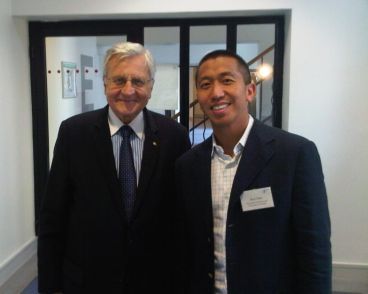
Central bank salaries:
Below is a table of the salaries for selected central bank leaders and compares these figures to their respective national median incomes (coming soon). Central bank heads could often be making much more money in the private sector. This is especially true in the case of the United States where the Fed Chairman’s salary is far below his peers at other central banks. Nevertheless, the magnitude of the central bank salary relative to national median income is an interesting gauge/proxy on how highly valued the position is within that country. Nevertheless, American exceptionalism is true again as the role of Fed Chairman is a highly powerful and desirable position that comes with relatively low remunerative (current) rewards.
References:


